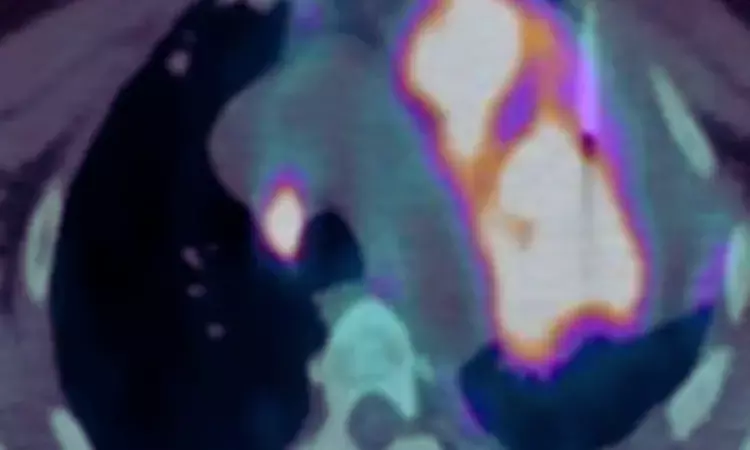- Home
- Medical news & Guidelines
- Anesthesiology
- Cardiology and CTVS
- Critical Care
- Dentistry
- Dermatology
- Diabetes and Endocrinology
- ENT
- Gastroenterology
- Medicine
- Nephrology
- Neurology
- Obstretics-Gynaecology
- Oncology
- Ophthalmology
- Orthopaedics
- Pediatrics-Neonatology
- Psychiatry
- Pulmonology
- Radiology
- Surgery
- Urology
- Laboratory Medicine
- Diet
- Nursing
- Paramedical
- Physiotherapy
- Health news
- Fact Check
- Bone Health Fact Check
- Brain Health Fact Check
- Cancer Related Fact Check
- Child Care Fact Check
- Dental and oral health fact check
- Diabetes and metabolic health fact check
- Diet and Nutrition Fact Check
- Eye and ENT Care Fact Check
- Fitness fact check
- Gut health fact check
- Heart health fact check
- Kidney health fact check
- Medical education fact check
- Men's health fact check
- Respiratory fact check
- Skin and hair care fact check
- Vaccine and Immunization fact check
- Women's health fact check
- AYUSH
- State News
- Andaman and Nicobar Islands
- Andhra Pradesh
- Arunachal Pradesh
- Assam
- Bihar
- Chandigarh
- Chattisgarh
- Dadra and Nagar Haveli
- Daman and Diu
- Delhi
- Goa
- Gujarat
- Haryana
- Himachal Pradesh
- Jammu & Kashmir
- Jharkhand
- Karnataka
- Kerala
- Ladakh
- Lakshadweep
- Madhya Pradesh
- Maharashtra
- Manipur
- Meghalaya
- Mizoram
- Nagaland
- Odisha
- Puducherry
- Punjab
- Rajasthan
- Sikkim
- Tamil Nadu
- Telangana
- Tripura
- Uttar Pradesh
- Uttrakhand
- West Bengal
- Medical Education
- Industry
PET/CT before percutaneous needle lung biopsy improves diagnostic biopsy rates in lung cancer patients: Study

UK: A recent study published in the European Journal of Radiology has shown that metabolic information provided by PET/CT imaging may increase the accuracy of needle biopsies in patients with suspicious lung nodules.
“Our study revealed that the availability of PET/CT before the percutaneous needle lung biopsy improves the diagnostic biopsy rates,” the researchers wrote.
They found that metabolic information provided by 18F-FDG PET/CT and percutaneous needle lung biopsy (PNB) localisation to the PET-CT maximum activity region is tied to higher diagnostic biopsy rates, especially in masses. It appears to account for fewer needle passes, improved performance, and complications when available pre-biopsy.
Fluorine-18 fluorodeoxyglucose (18F-FDG) PET/CT is a molecular imaging technique that can locate maximum metabolic activity regions in tumours based on glucose metabolism by cancer cells. Yet there is a lack of a set guideline recommending PET/CT scans before CT-guided lung biopsy to assess the best site for obtaining tissue.
To provide further evidence, Konstantinos Stefanidis, Radiology Department, King’s College Hospital NHS Foundation Trust, London, UK, and colleagues aimed to evaluate the role of 18F-FDG PET/CT as a metabolic guide in increasing the accuracy, diagnostic yield and safety of CT-guided percutaneous needle lung biopsy.
For this purpose, the research team conducted a retrospective analysis of 340 consecutive patients with suspicious lung nodules, masses or extensive disease who underwent lung biopsy over three years. Patients were categorized into three groups: those who had PET/CT before the biopsy, those who had PET-CT following the biopsy and those who did not undergo PET-CT. A correlation was made with the histopathological result.
The researchers reported the following findings:
· 353 PNBs were performed (median lesion size 30 mm, 7–120 mm) with an overall diagnostic rate of 83.9 % (95.8 % malignant).
· Biopsy success rate was 88.8 % with PET-CT pre-PNB, versus 78.9 % of 175 PNB without PET-CT upfront.
· Correct targeting to PET-CT-maximum activity area (MAA) was present in 87.1 %.
· Biopsy success rate was 88.8 % for PNBs targeting the PET-CT-MAA region and only 52.8 % for PNBs not targeting the PET-CT-MAA.
· PET-CT pre-PNB had higher rates of PET-CT-MAA targeting compared to PET-CT post-PNB (91.0 % versus 80.0 %).
· The availability of PET-CT before the PNB led to significantly increased biopsy success rates in patients with a mass (OR:7.01), compared to a nodule or multiple nodules.
· Patients with a PET-CT pre-PNB underwent fewer PNB passes (mean 2.6 versus 3.1, Mann Whitney U).
· Serious complications were less common in the PET-CT pre-PNB group (4.5 % versus 10.9 %).
· Pre-PNB PET-CT performance improvement applied to all 3 radiologists and was greatest for masses and infiltrative abnormalities.
"Radiologists should be encouraged to be familiar with PET-CT images improving the diagnostic accuracy of the biopsy and contributing to early histologic diagnosis and staging," the researchers wrote. "PET-CT related artefacts, false-positive FDG uptake sites, and misregistration should be recognized avoiding misinterpretation of possible sites of biopsy."
Adding that, "Unnecessary biopsies of benign lesions may be avoided with functional imaging and radiomic CT texture analysis combination."
“Our data clearly show the necessity to consider PET/CT as a metabolic guide in CT-guided biopsies and should be considered as a recommendation in future guidelines,” the group concluded
Reference:
Stefanidis K, Bellos I, Konstantelou E, Yusuf G, Hardavella G, Jacob T, Goldman A, Senbanjo T, Vlahos I. 18F-FDG PET/CT anatomic and metabolic guidance in CT-guided lung biopsies. Eur J Radiol. 2024 Jan 14;171:111315. doi: 10.1016/j.ejrad.2024.111315. Epub ahead of print. PMID: 38237515.
Dr Kamal Kant Kohli-MBBS, DTCD- a chest specialist with more than 30 years of practice and a flair for writing clinical articles, Dr Kamal Kant Kohli joined Medical Dialogues as a Chief Editor of Medical News. Besides writing articles, as an editor, he proofreads and verifies all the medical content published on Medical Dialogues including those coming from journals, studies,medical conferences,guidelines etc. Email: drkohli@medicaldialogues.in. Contact no. 011-43720751


